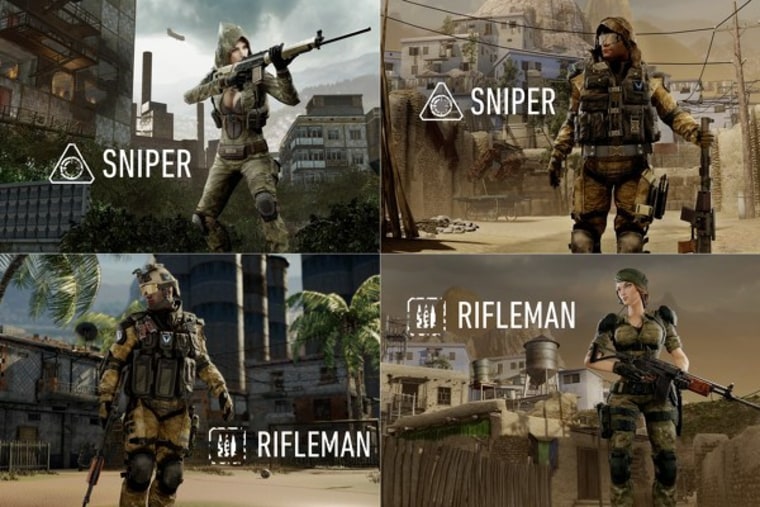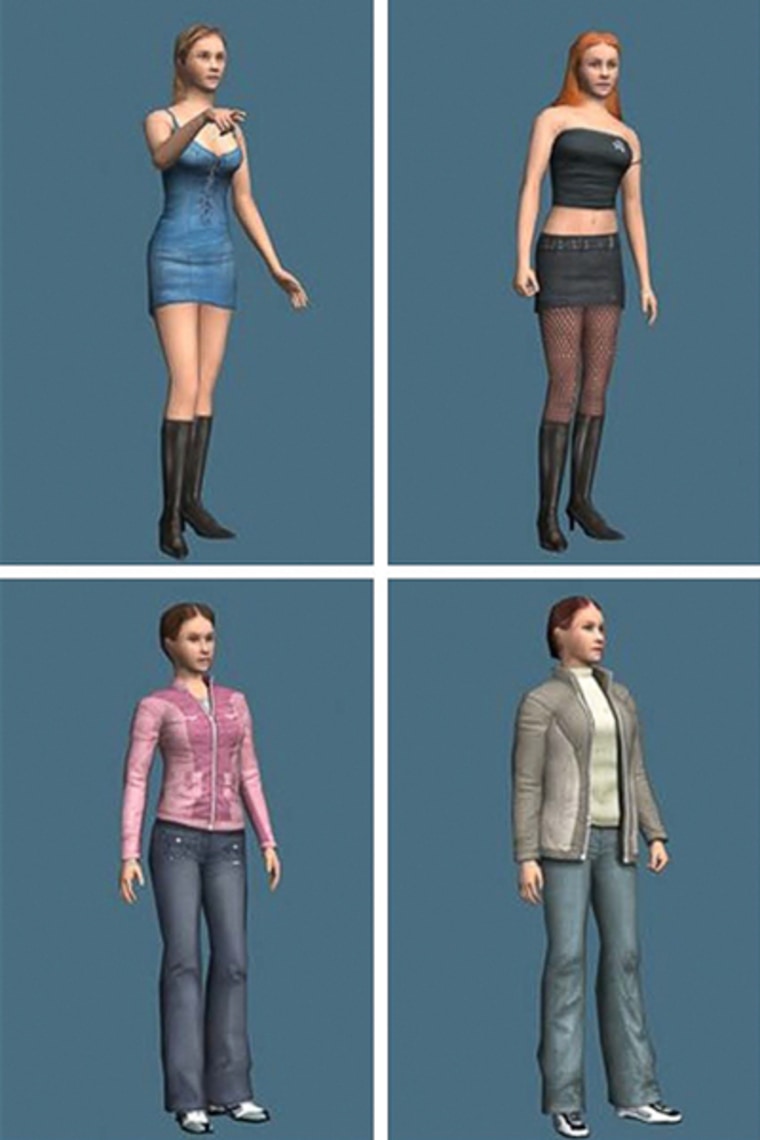German game developer Crytek caused a stir in the gaming press when the lead producer on its forthcoming multiplayer shooter "Warface" justified the game's cartoonishly sexualized portrayals of female characters, saying it was what players wanted to see. This is the latest example of a common trend of treating female video game characters differently than their male counterparts — relegating women to derogatory supporting roles, giving them inhumanly exaggerated bodily proportions, and generally casting them as little more than sexual objects.
Crytek's justification — which producer Joshua Howard explained to Wired — was based on focus group testing, which differed by region: In the West, from Russia to the U.S., the female characters will have Barbie-doll measurements and skimpy tops (though in China, they will be more modestly dressed). So when the game is released for PC in the U.S. this week, the only female character that gamers — men or women — will be able to choose to play is a hypersexualized one.
The common defense marshaled in favor of such inequitable treatment is to say, "It's just a game." That may be true, but a research paper published this summer in the journal "Computers in Human Behavior" suggests that a virtual gender imbalance could have real-world consequences.
The study found that women who played as characters dressed up in skimpy outfits seemed more likely to objectify their own, non-virtual bodies in a similar way. These women also appeared to be more accepting of so-called rape myths — believing that women who are victims of sexual assault have themselves to blame.

In researching for their article, Jesse Fox of Ohio State University and Stanford's Jeremy Bailenson gathered 86 women between the ages of 18 and 41 and placed them in a virtual-reality simulator. The participants were assigned different female avatars in the virtual world, some of which were "sexualized" — meaning that the avatars were dressed in provocative clothing. The researchers also created a representation of the participant's face for some of the avatars, to test if one's likeness to their virtual counterpart had any bearing on their self-perception when "wearing" the avatar.
The participants were then given a list of questions that asked them to rank their reactions on a five-point scale (from "strongly disagree" to "strongly agree") to statements like, "In the majority or rapes, the victim is promiscuous or has a bad reputation."
Fox and Bailenson found that the women who had played as the salaciously dressed avatars and had their own faces attached to the avatars were more likely to "agree" or "strongly agree" to these rape myth statements than those who had played as conservatively dressed avatars with a different face.
The women in the study were also asked to "free write" their own responses after the study was completed. The researchers found that the participants with sexualized avatars were more likely to self-objectify — i.e. expressed more thoughts and concerns with their physical appearance — than their primmer counterparts.

Speaking with NBC News about their research, both Fox and Bailenson said that these are preliminary findings, emphasizing that critics of video games should not jump to hasty conclusions before more research can be done on the subject.
"It's important to be careful," Bailenson said. "What we demonstrated is, in a very short-term context by putting a woman in a sexualized avatar that had her own face, it made her accept rape myths more."
Other experts have questioned some of the study's methods.
Chris Ferguson, chair of the psychology department at Stetson University, who has researched the effects of violent video games on real-world behavior, told NBC News in an email that the study "has a pretty common problem that's actually widespread in media/body image research": the "manner of the study" and the nature of the questions asked made it "pretty obvious to the participants what the hypothesis of the study was."
"When that happens you can often find what is called 'demand characteristics,' which means people may respond according to how they think they should rather than how they actually feel," Ferguson wrote. "This can cause spurious results. Often, in the body image literature when more subtle designs are employed, where it’s less obvious what they hypotheses of the study are, no effects are found."
Sheri Rubin, president and CEO of the digital consulting and contracting firm Design, Direct, Deliver and a board member for the International Game Developers Association's Women in Games special interest group, told NBC News that she had similar concerns with the study. She noted that the notion of being "sexy" or "suggestively dressed" are "highly subjective and individualized" concepts, and the study didn't appear to have "any kind of pre-test or assessment of the participant attitudes" to indicate how, exactly, the virtual reality experience changed their outlook.
"I don’t feel comfortable concluding that the results demonstrated greater rape myth acceptance," Rubin said.
Still, Rubin wasn't exactly a fan of the "Warface" debacle either, telling NBC News that developers like Crytek have a "responsibility" to decide if player feedback is "useful" when it's asking for things like sexier female characters, "but also if it is what the majority of their players actually want versus the clamoring for changes from a small, but very vocal minority."
Considering that the Entertainment Software Association found in its 2013 report on "Essential Facts about the Computer and Video Game Industry" that 45 percent of "all game players" are now female, the gap between such a "vocal minority" and the general community of gamers is now more glaring than ever before.
When it comes to "Warface"-style mandates that all female characters must, however illogically, have low-cut dresses and stiletto heels as their default attire, Rubin hopes that the game industry will come to adopt the same artistic and ethical standards as any other major entertainment field. Cleavage in and of itself isn't a bad thing, Rubin reasoned, it's how poorly many games justify the ubiquitous inexplicable presence of cleavage that gets them into trouble and alienates prospective players.
"Context always plays a part in how a story or imaginary world is perceived in any medium," Rubin said. "Most people would find it peculiar if suddenly the puzzles Dora the Explorer had to solve were gruesome murders like you see in many procedural dramas. It’s no different when it comes to video games."
Yannick LeJacq is a contributing writer for NBC News who has also covered technology and games for Kill Screen, The Wall Street Journal and The Atlantic. You can follow him on Twitter at @YannickLeJacq and reach him by email at: Yannick.LeJacq@nbcuni.com.
